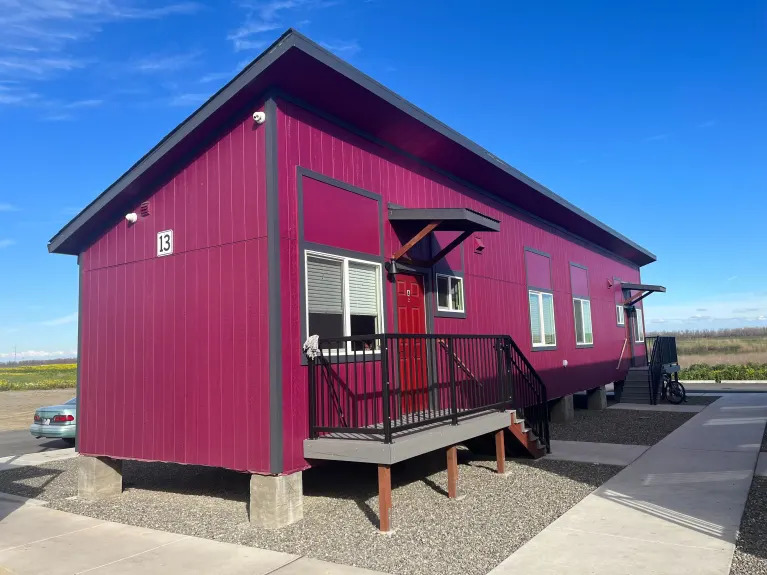Homelessness in California might be an issue that may never be fully resolved.
Locally, in Woodland and Yolo County, the continually rising population of those experiencing homelessness in the past few years has been one of the topics that consistently dominates the community’s interest.
That number seems to have risen according to the 2024 Point-in-Time Count which revealed a “notable increase” in individuals and families experiencing homelessness in the county.
First conducted in 2005, the Point in Time (PIT) Count is an unduplicated count of individuals experiencing homelessness on a single night within the last 10 days of January.
The Yolo County Homeless and Poverty Action Coalition’s report identified 942 individuals and families experiencing homelessness on Jan. 24, 2024, a 26.3% increase, or 196 more individuals compared to 2022.
“This rise reflects ongoing challenges in addressing homelessness within the community, particularly in the face of transitions from COVID-related housing programs,” stated a prior Yolo County press release sent out in July. “Unsheltered homelessness saw a significant increase, with 255 more individuals living outside in 2024, while sheltered homelessness saw a decrease of 59 individuals.”
The report also noted that homeless populations saw increases in rural and unincorporated areas, while Davis experienced reductions and West Sacramento maintained stable numbers.
Woodland saw the most notable increase, going from 267 to 416 individuals experiencing homelessness between 2022 and 2024.
PIT counts are conducted every two years. The previous count was originally supposed to be completed in January 2021 but was delayed until February 2022 due to the COVID-19 pandemic.
The 2022 report showed that Yolo County had a total of 746 individuals experiencing homelessness. This equated to a 13.9% increase in the homeless population from 2019 to 2022.
HPAC organizes the Point-in-Time Count to secure funding for nonprofit providers and local governments. This funding is intended to quickly rehouse individuals and families experiencing homelessness while minimizing associated trauma and dislocation, according to the press release.
Spaced-out bunks inside the men’s sleeping quarters at the Woodland shelter located at the East Beamer Way Campus at 1901 E. Beamer St. (Carlos Guerrero/Daily Democrat)
“The data from the 2024 PIT Count allows us to tailor our services to meet the unique needs of those experiencing homelessness in Yolo County,” stated Jeneba Lahai, chair of the Yolo County Homeless and Poverty Action Coalition. “It underscores the collaboration across our community to create meaningful impacts and support our most vulnerable residents.”
This effort aligns with HPAC’s mission to provide leadership on homelessness and poverty in Yolo County. HPAC envisions creating and sustaining a comprehensive, coordinated and balanced array of human services for homeless and low-income individuals and families.
In collaboration with the Health and Human Services Agency (HHSA), HPAC has developed the 2023-26 Yolo County Plan to Address Homelessness, which outlines the county’s strategy to address homelessness through 2026. Additionally, HPAC has established a synergistic working relationship with the Yolo County Commission to Address Homelessness. This partnership supports the goal of the Yolo County Strategic Plan to reduce disparities and enhance the quality of life for residents by improving access to essential services for vulnerable populations.
Yolo County’s comprehensive strategy for tackling local homelessness and supporting residents in confronting the statewide housing crisis encompasses several key initiatives:
Building and Scaling a Coordinated Access System (CAS): Implementing the Homeless Emergency Assistance, Rapid Transition to Housing, creating navigation assistance and eviction prevention programs locally to create a streamlined system for accessing homeless services, including food, shelter, clothing and protection from violence.
Focusing Emergency Shelter and Interim Housing on Rehousing: Utilizing the region’s Homeless Management Information System (HMIS) to maintain accurate data and improve service delivery.
Increasing Permanent Housing Opportunities: Planning, developing and sustaining options to meet the housing needs of people facing homelessness.
Expanding Prevention and Diversion Programs: Continuously assessing needs and identifying gaps in services for persons facing homelessness while supporting the planning, funding, and development of services to meet prioritized needs within the county.
Investing in Community Capacity Building and Training: Maintaining a coordinated response among service providers to ensure continuity of services and promoting access to and effective utilization of mainstream human services programs.
Ensuring Adequate Behavioral Health Services: Addressing the behavioral health needs of the homeless population is essential for fostering long-term stability and well-being. In collaboration with community partners, HHSA has implemented innovative supportive services for residents experiencing homelessness. These efforts include coordinating housing and health-related services for individuals with complex needs, ensuring a holistic approach to care and support.
When considering the numbers in the count, it is important to recognize that they reflect only those identified as homeless within Yolo County on a single day. Many people move in and out of homelessness during the year, so the actual number of people experiencing homelessness in 2024 may be higher than reported.
The PIT Count, based on visual observations of unsheltered individuals and groups, as well as a census of people in shelters, provides a snapshot of homelessness at a single point in time. While valuable, county officials note that it may not adequately reflect the total number of people experiencing homelessness throughout the year.
Woodland, working with Yolo County, has already brought dozens of small housing units as well as other facilities to provide a place where the homeless could go starting more than three years ago.
The city has been working with Friends of the Mission to provide services and housing at the northwest corner of East Beamer Street and County Road 102. The land was owned by the city and was later transferred to Friends of the Mission after the site infrastructure project was completed and the property is annexed to the city.
The project has cost more than $3.1 million and includes 61 units of permanent supportive housing via tiny homes, and a 6,500-square-foot shelter facility where medical and psychiatric treatment can be administered. The site also contains bathroom facilities.













+ There are no comments
Add yours